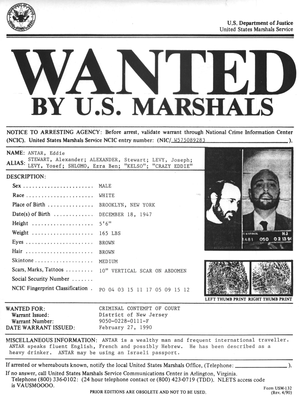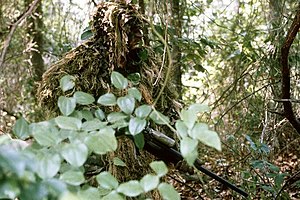 |
| Lt. Matthew Sherley |
Good evening, Lt. can you start by introducing yourself to the readers, including your background and your now projects and book?
Lt. Sherley -
I'm Matthew Sherley. I am a retired police detective from a medium sized (360 officer) department in Amarillo, TX. I currently work for the U.S. government as a contract employee. I have completed my first novel, Insider Trading, a spy thriller. I am seeking representation for it, and it is currently out on multiple submissions.
Fiona -
Best of luck with your journey. Lt., tonight we're talking about hostage negotiation. That sounds like a horribly nerve wracking job. Innocent lives are at risk. Can you tell me about the training which would qualify someone to take on such a task?
Lt. Sherley -
The primary source of training for hostage negotiation is the FBI. They offer formalized training for negotiators. In my case, the commander of the hostage negotiation unit had a master's degree in psychology, and he developed an internal training course. There are also state and national groups affiliated with negotiators. Those organizations have annual conferences which always feature in-service training.
Fiona -
And you have performed this duty - is there a frequent need for hostage negotiators or is there time for your expertise to grow rusty?
Lt. Sherley -
If the duty was strictly limited to hostage scenes, it could become rusty. However, we were also used for all crisis negotiations. That would include suicidal subjects threatening themselves with weapons where they could easily hurt someone else.
Fiona -
So in a mid-size center is this a weekly occurrence... ?
Lt. Matt Sherley -
More like once a month or every three weeks.
Fiona -
Are there many trained officers who could fulfill this duty? Or were you called in from wherever you were - like a doctor on call?
Lt. Sherley -
Our department had a team of negotiators (four plus the commander). We were attached to the SWAT team. Any time there was a SWAT call out, we were all deployed. The negotiators acted as a team also, so we were all called out every time, rather than just one negotiator. One functioned as the primary, and one as the secondary. The other two did research on the subject, kept equipment up and running, liaisoned with the SWAT commander, etc. There are a lot of moving parts to a SWAT call-out/hostage negotiation.
Fiona -
What are the duties of the primary?
Lt. Sherley -
The primary is the person who conducts the actual negotiation and does all the talking with the subject.
Fiona -
So they call up on the phone, "Hey there..."
Lt. Sherley -
Yes. the primary will make the initial call and identify himself or herself and open a dialogue with the subject. Team members then try to help each other identify the psychological type of the person we are dealing with. Also, based on what the person has said, we try to determine among ourselves what's important to that person.
Fiona -
Does that dialogue (and I know this is sensitive so just flag me if I step on hallowed ground) go somewhat like the rapport building in an interrogation? (blog link to rapport building article)
Lt. Sherley -
Somewhat. The negotiator is searching for common ground, something that we can have a conversation about that will ultimately lead to the issue at hand.
Fiona -
I know there are certain questions that you ask - like, "Do you need medical assistance?" Can you share any of the pat questions?
Lt. Sherley -
We always want to know how many people are with the subject and if they need medical attention. We always want to know what is going on that caused the incident to occur. That's a little trickier. That can be a little easier if the negotiator was successful at establishing common ground and is building rapport.
Fiona -
Do you find the hostage takers are open to that kind of rapport building? What kind of demeanor do you find on the other line?
Lt. Sherley -
It can be at either end of the spectrum. I've had subjects that were scared and realized they had made a mistake, and I've had others who were openly hostile, threatening to kill the people with them or the police if we came close.
Fiona -
What kinds of situations end in hostage taking? And statistically, what is the outcome for hostages?
Lt. Sherley -
Statistically, the outcome is good for the hostages. Often, hostage taking is a result of failed relationships or crimes gone wrong. I've dealt with estranged husband/wife, boyfriend/girlfriend situations, and I've dealt with escaped prison inmates who took hostages in the first neighborhood they came to.
Fiona -
Which are easier to deal with (generally) crimes of passion or crimes of opportunity?
Lt. Sherley -
Hostage incidents that result from failed relationships (crimes of passion) are generally harder to resolve than hostages incidents resulting from opportunity (crimes interrupted by police). The reason is because there is already a highly volatile, emotionally charged issue between the hostage and hostage taker. It is more difficult to humanize the hostage during negotiations if there is already hatred there before the negotiator ever makes contact
Crimes gone wrong are just that. Criminals that got caught by the police before they could make an escape after committing their crime.
Fiona -
You've seen plenty of crisis negotiation on TV and read scenes in books. First, is there a title you could suggest where you thought it was pretty spot on? And my follow up questions, how do they get it wrong? And how can writers get it right?
Lt. Sherley -
I would highly recommend the book Crisis Negotiations: Managing Incidents and Hostage Situations in Law Enforcement and Corrections by Wayman Mullins and Michael McMains.
The primary thing I see on TV is negotiators using the term "hostage" when talking to the hostage takers. We never do that. We don't want to plant the seed that the person they have with them is a hostage. We want to help them realize that the person is a real person. We try everything we can to humanize the victims.
Fiona -
Is there any special jargon/vocabulary that would be used in a hostage situation that needs to be peppered into the dialogue?
Maybe not part of the public face - but more a part of the behind the scene correspondence?
Lt. Sherley -
We try to keep the jargon to a minimum (or none at all). We want to use common language to set the subject at ease. Constant reminders that nothing bad has happened (assuming that's the case), and we can help them out of the situation without being hurt themselves.
Fiona -
How long is a typical hostage crisis from call to resolution? How tired do you get working under the stress?
Lt. Sherley -
There is no typical length. I've had negotiations as short as 30 minutes and as long as several hours. One of the most famous hostage incidents in Sweden lasted six days. It is very emotionally draining to spend that much time on the phone with someone, trying to negotiate a peaceful resolution. It's even more draining for the negotiator if the subject ends up committing suicide.
Fiona -
In search and rescue, we have a book that tells us what various groups will do and how far away/in what direction we need to look and the probability of finding them alive at various time intervals. Do you have such a resource - if you have type Aq3 then use this tactic...?
(statistically derived probabilities)
Lt. Sherley -
Yes, we use loose guidelines based on psychological types.
Fiona -
What would you like to tell me about writing a hostage negotiation scene into a plot line that I didn't know enough to ask you about?
Lt. Sherley -
Maybe the traits of a negotiator. We look for officers that are calm, experienced, and intuitive. So much of negotiation is based on the feel of the negotiator and his/her ability to relate well to people.
Perhaps one of the key principles involves the very nature of negotiation - a give and take on the part of both parties. The principle we try to always abide by is to never give up something without getting something in return.
Fiona -
Interesting. So as an investigator shows his abilities working with interview and interrogation, her skills would be observed, and she'd get sent to training school? Where is training school and how long does it last?
Lt. Sherley -
In my case, I was still a patrol officer when I was involved in the incident that the negotiating team noticed. I was able to talk a suicidal subject who had climbed over the rail on a bridge over an interstate highway down. Then, later when there was an opening for a negotiator on the team, they asked me to apply.
Training can vary. FBI schools are usually either 40 hours or 80 hours. They are generally sponsored by a local LE agency. Also, some universities specialize in that kind of training. Here in Texas, Texas State University does (one of the authors of the book I recommended is a professor there as well as a peace officer)
Fiona -
Now, you just got back from an exciting event - do you want to tell us about Crime Writers' Police Boot Camp?
Lt. Sherley -
I'd love to. I just finished teaching a week long session of Crime Writers' Police Boot Camp. It was part of the West Texas Writers' Academy sponsored by West Texas A&M University.
We spent mornings in the classroom with sessions such as creating believable police characters, the importance of research and authentication, interrogation, the smells of law enforcement and introduction to forensics and death investigation. Then, every afternoon, we were out in the field. We spent one afternoon at the firing range for a a firearms demonstration and learning about the various types of firearms. We had our students drive a pursuit driving course. We had them investigate a mock crime scene. They went to a firearms simulator for shoot/don't-shoot training. They toured the county jail, saw the state police helicopter and its capabilities, and got to see a K-9 working first-hand. It was a long and tiring week, but the students had fun and learned a lot.
Fiona -
And you understood the writers' perspective because you are an author too. Can you give us a quick synopsis of your novel (not yet in print).
Lt. Sherley -
My debut novel, Insider Trading, is a spy thriller. The tag line is: What if a terrorist attack during the State of the Union Address was sanctioned from within the White House?
Fiona -
Very fun!
Our time has quickly flown - I am going to conclude with our ThrillWriting traditional question. Would you share the story behind your favorite scar? Or - if you are one of the people who made it this far without any scars, would you could share a harrowing experience you lived through?
Lt. Sherley -
Fortunately, I have been pretty lucky, only one surgery on my knee as a result of a New Year's Eve brawl started by a guy who refused to go home from his neighbor's party. The more harrowing experiences were when I was a motorcycle officer doing funeral escorts and people would pull out in front of us as we were trying to get to the next intersection. It's like dodge-ball on a motorcycle!
Fiona -
Thank you for sharing your expertise, Lt.













































